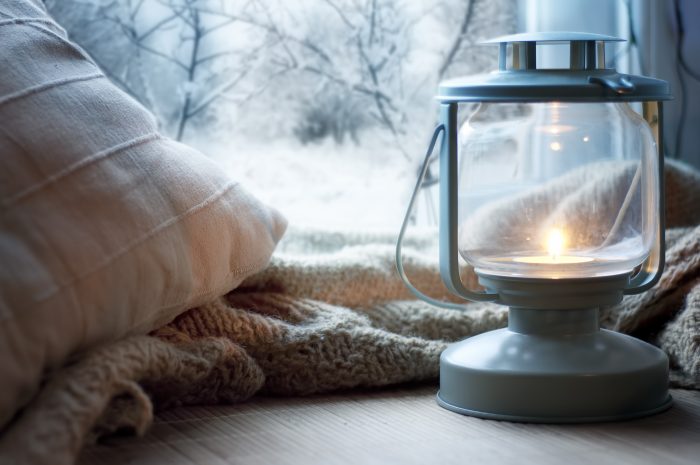WHEN THE LIGHTS GO OUT THIS WINTER

Do you know just what to do in the event of a power failure this winter? Discover why winter weather condition causes these failures, how you can develop a power interruption readiness plan, and which alternative power sources to consider to stay secure and warm throughout any kind of extreme winter storm. Proper prep work and supplies are key to staying safe and secure until the power returns.
Exactly how do winter weather condition generate power outages?
Severe temperature levels put anxiety on electrical systems in summer and winter. This stress and anxiety are intensified when demands on the electric grid increase, which could happen in the chilliest months of winter when the heat is on continuously, extra space heaters are used, and people who depend on alternate energy resources such as solar are limited by less accessibility to sunshine. Winter storms additionally bring hefty snow as well as fierce winds that have the ability to uproot trees or cause broken tree branches which often can cause power outages. With the freezing temperature levels and perspective for a tree arm or leg or particles to fall into power lines, it’s not surprising that power blackouts are common in regions that experience serious winters months.
Stay Informed:
Check online to find available resources for your city or state to locate nearby shelters and stay updated on the storm details. Refer to these sources regularly for updated storm information and local advisories from your local authorities.
Talk to your family members to describe just how winter weather condition could impact the electrical system. Discuss with your family members what to do in the event of a power outage and what supplies you will need until power is restored. Power outages can happen once a day or every couple of hours depending on the weather conditions. The key is to stay calm in an emergency and stick to the plan you create with your family.
What materials do I require?
Developing an emergency readiness set is necessary to comfort and survival during continual or moving power interruptions. Speak with your family members on what supplies are needed and the purpose of each item in your emergency kit.
An emergency kit must consist of:
- Multiple flashlights for flame-free resources of light.
- A radio to listen to neighborhood and weather stations for updates on the storm.
- Extra batteries for the flashlights and radio.
- A First Aid kit to treat small injuries.
- Blankets and warm clothes in case of loss of heat.
Alternative Heating Options and Alternative Power Options:
Mobile generators and crank radios provide short-term resources of power while you await basic power to be brought back. You could utilize crank radios for charging mobile phones, but it is not used for running large household appliances, as they require too much power as well as fuel. For bigger tasks, you’ll require a gas-powered mobile generator and even a whole house backup generator. To ensure safe generator use, you should permit proper airing vent as well as adhere to security preventative measures, to avoid carbon monoxide poisoning.
There are also several, non-electric home heating options, as well. Wood burning stoves, kerosene heaters, as well as gas-powered space heaters will maintain heat and keep you warm. However, they also require correct ventilation and monitoring to stop fires and carbon monoxide poisoning. Refer to manufacturer directions for setting up as well as running any type of alternative heating or power items.
Educate your family to follow these standard power interruption security policies to remain as secure throughout the power outage.
What to do in a Power Outage:
- Keep fridge and freezer doors closed to maintain temperature.
- Wear multiple layers of clothing to stay warm.
- Shut off and unplug electronic devices to avoid damage from power surges.
- Follow manufacturer safety directions when making use of generators and alternative heating systems.
- Make certain you have adequate ventilation to prevent carbon monoxide gas poisoning when using backup power and heating equipment.
- Keep a spare gas can at the house in the event you are unable to leave the home.
What NOT to do in a Power Outage:
- Purchase a generator without considering the kind of generator that is needed or what power options the generator can utilize.
- Run generators inside your home or in a closed garage.
- Consume food that hasn’t been properly preserved at the needed temperature level.
- Don’t burn charcoal or propane indoors.
- Utilize your stove as a resource of warmth.
- Leave an alternative heat source unattended.
Power blackouts could last mins, hours, or days. Stay calm in an emergency and, ultimately, once the weather allows, power will certainly be restored. Build a survival plan together to guarantee everybody recognizes just what to do and exactly how to use the products in a power blackout emergency. Maintaining your family members is your top priority during a power outage in winter. By creating a power outage emergency plan ahead of time, stockpiling on the needed products, and following safety recommendations will make sure that you are prepared for a power blackout this winter.
Originally Posted by INSURANCE CENTERS OF AMERICA INC.
Do you have questions about your insurance? Find an insurance agent near you with our Agent Finder
Search All Blogs
Search All Blogs
Read More Blogs
Buckle Up for Savings: How Car Safety Ratings Save You Money
Crash Test Your Cash Flow: How Car Safety Ratings Impact Insurance Rates
Pool Paradise or Premium Pain? The Splashing Truth About Pool Insurance
Dive into Savings: How Pools Affect Homeowners Insurance (and How to Stay Afloat)
Lights, Camera, Action! Exploring the Real-World Locations of Your Favorite Films
Exploring the Real-World Locations of Your Favorite Films
From PJs to Productivity: Mastering the Work-From-Home Hustle
Ditch the Commute, Keep the Cash: Working From Home Hacks for Peak Performance
The Farewell Financial: Planning a Peaceful Goodbye
Beyond Goodbyes: A Guide to Navigating Funeral Costs and Life Insurance
From Death Traps to Death Beaters: How Cars Became Surprisingly Safe
Buckle Up and Breathe Easy: Unveiling the Hidden Heroes of Car Safety
Cracking the Condo Code: Your Guide to Condo Insurance
Condo Confusion Conquered! A Guide to Condo Insurance Coverage
Coasters, Candy Apples, and Family Fun: A Road Trip Through America’s Top Amusement Parks
Buckle Up for Fun! The 5 Best Amusement Parks for Your Next U.S. Adventure
From Seedling to Sequoia: Why Your Business Insurance Needs to Grow Too
Is Your Business Insurance Stuck in the Startup Stage? Time to Grow!
Why Life Insurance Matters for Businesses
Death and the Business Owner: How Life Insurance Can Secure Your Legacy

















